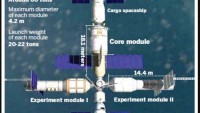Here’s how the Brain Recognizes What the Eyes See
| Arthur Dominic Villasanta | | Jun 09, 2017 11:18 PM EDT |
(Photo : Getty Images) A human eye.
Scientists now have a better understanding of vision processing, or how our brains recognize objects, following research at the Salk Institute. The work was published in the peer-reviewed journal Nature Communications a few days ago.
Salk Institute researchers analyzed how neurons in a critical part of the brain called V2 respond to natural scenes.
Like Us on Facebook
"Understanding how the brain recognizes visual objects is important not only for the sake of vision, but also because it provides a window on how the brain works in general," said Tatyana Sharpee, an associate professor at Salk's Computational Neurobiology Laboratory and senior author of the paper.
"Much of our brain is composed of a repeated computational unit, called a cortical column. In vision, especially, we can control inputs to the brain with exquisite precision, which makes it possible to quantitatively analyze how signals are transformed in the brain."
The ability to see derives from sets of complex mathematical transformations we're not yet able to reproduce in a computer, said Sharpee. In fact, more than a third of our brain is devoted exclusively to the task of parsing visual scenes.
Our visual perception starts in the eye with light and dark pixels.
These signals are sent to the back of the brain to an area called V1 where they are transformed to correspond to edges in the visual scenes. As a result of several subsequent transformations of this information, we can recognize faces and other objects and whether they are moving.
How precisely this recognition happens is still a mystery, in part, because neurons that encode objects respond in complicated ways.
Sharpee and Ryan Rowekamp, a postdoctoral research associate in Sharpee's group, developed a statistical method that takes these complex responses and describes them in interpretable ways.
To develop their model, the team used publicly available data showing brain responses of primates watching movies of natural scenes (such as forest landscapes) from the Collaborative Research in Computational Neuroscience (CRCNS) database.
"We applied our new statistical technique in order to figure out what features in the movie were causing V2 neurons to change their responses," says Rowekamp.
"Interestingly, we found that V2 neurons were responding to combinations of edges."
The team revealed that V2 neurons process visual information according to three principles.
First, they combine edges that have similar orientations, increasing robustness of perception to small changes in the position of curves that form object boundaries.
Second, if a neuron is activated by an edge of a particular orientation and position, then the orientation 90 degrees from that will be suppressive at the same location, a combination termed "cross-orientation suppression."
These cross-oriented edge combinations are assembled in various ways to allow us to detect various visual shapes. The team found that cross-orientation was essential for accurate shape detection.
The third principle is that relevant patterns are repeated in space in ways that can help perceive textured surfaces of trees or water and boundaries between them, as in impressionist paintings.
Researchers incorporated the three organizing principles into a model they named the Quadratic Convolutional model that can be applied to other sets of experimental data.
Visual processing is likely to be similar to how the brain processes smells, touch or sounds, said the researchers, so the work could elucidate processing of data from these areas, as well.
The more immediate application of the model might be to improve object-recognition algorithms for self-driving cars or other robotic devices.
"It seems that every time we add elements of computation that are found in the brain to computer-vision algorithms, their performance improves," said Sharpee.
Tagsvision processing, Salk Institute, neurons, V2, human eye, visual perception
©2015 Chinatopix All rights reserved. Do not reproduce without permission
EDITOR'S PICKS
-

Did the Trump administration just announce plans for a trade war with ‘hostile’ China and Russia?
-

US Senate passes Taiwan travel bill slammed by China
-

As Yan Sihong’s family grieves, here are other Chinese students who went missing abroad. Some have never been found
-

Beijing blasts Western critics who ‘smear China’ with the term sharp power
-

China Envoy Seeks to Defuse Tensions With U.S. as a Trade War Brews
-

Singapore's Deputy PM Provides Bitcoin Vote of Confidence Amid China's Blanket Bans
-

China warns investors over risks in overseas virtual currency trading
-

Chinese government most trustworthy: survey
-

Kashima Antlers On Course For Back-To-Back Titles
MOST POPULAR
LATEST NEWS
Zhou Yongkang: China's Former Security Chief Sentenced to Life in Prison

China's former Chief of the Ministry of Public Security, Zhou Yongkang, has been given a life sentence after he was found guilty of abusing his office, bribery and deliberately ... Full Article
TRENDING STORY

China Pork Prices Expected to Stabilize As The Supplies Recover

Elephone P9000 Smartphone is now on Sale on Amazon India

There's a Big Chance Cliffhangers Won't Still Be Resolved When Grey's Anatomy Season 13 Returns

Supreme Court Ruled on Samsung vs Apple Dispute for Patent Infringement

Microsoft Surface Pro 5 Rumors and Release Date: What is the Latest?












